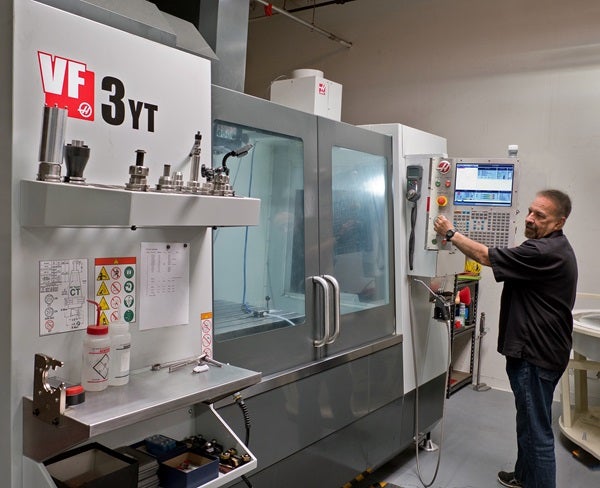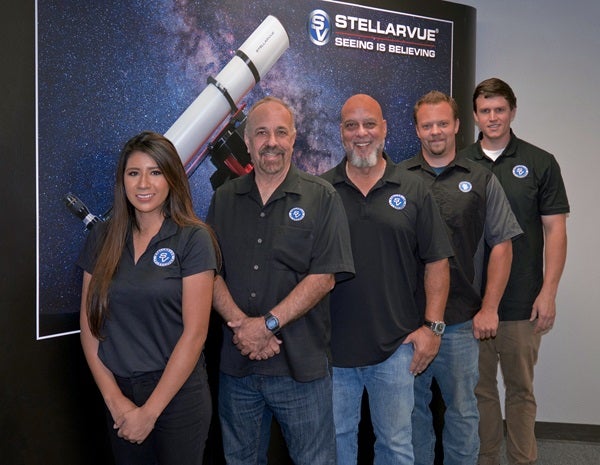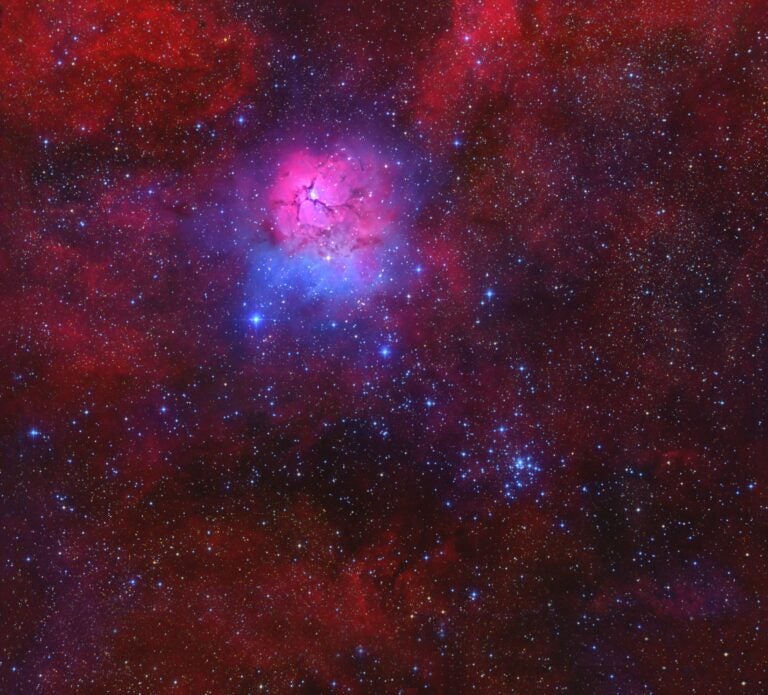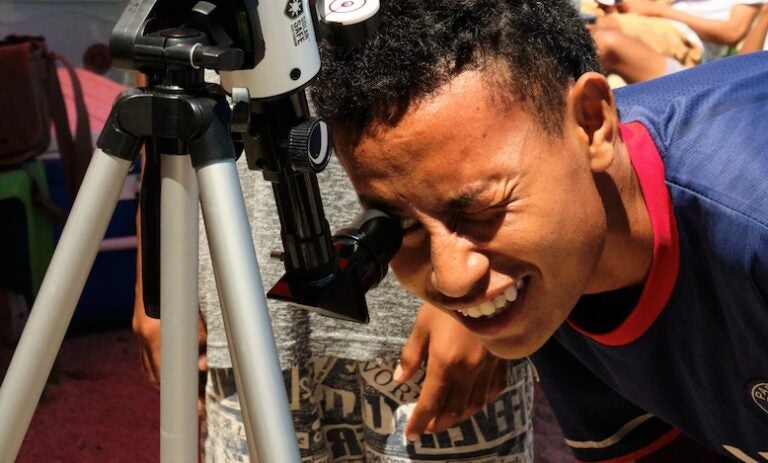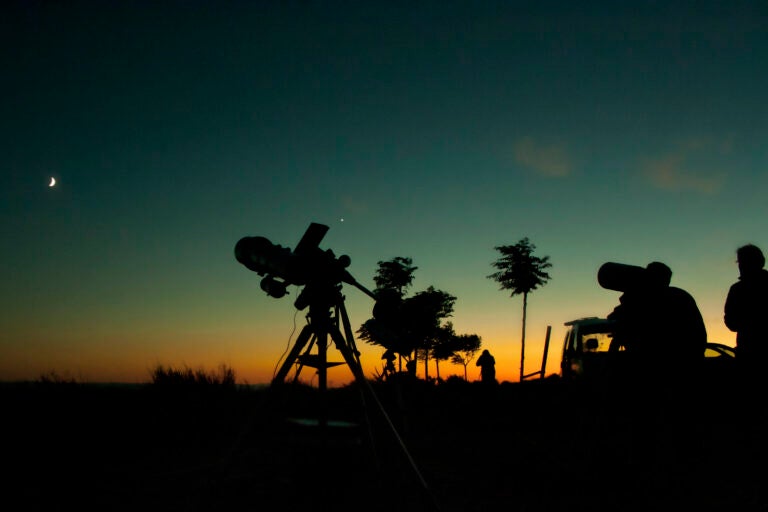All stories have a beginning. In the case of Vic Maris, the story starts with a kid who was simply fascinated with the stars. A neighbor noticed the boy’s passion and gave him a copy of The Golden Book of Astronomy, by Rose Wyler and Gerald Ames. Young Vic pursued his interest and, much later in life, went on to found Stellarvue.
During his childhood, Maris asked his parents for a telescope, and they innocently bought him one of those terrible “department store” scopes that proved nearly impossible to use. A friend who was equally interested in astronomy suggested to Maris that if he wanted a better scope, he’d have to build it himself.
Thus was born the guiding principle that stuck with Maris all his life: If you want something built right, you have to build it yourself.
Building scopes
The first telescope Maris made was a 6-inch f/7.8 Newtonian reflector that came as a kit from Edmund Scientific. He learned how to grind the mirror and, with a little help, to parabolize it. This scope served him well over the next few years, but he didn’t like the tube currents, which distorted the views of celestial objects. So, his next endeavor was to build a refractor, and he has been building them ever since.
For many years, Maris’ telescope making took a back seat to his main job as a park ranger in California. It was only toward the end of this career that he began teaching astronomy to the general public and decided to make a few more refractors, one for himself and a few for his friends.
The telescopes worked so well that Maris found himself with more requests for them, so he set up a shop in his garage. In all, he made about 25 of these 3.2-inch scopes with achromatic doublet lenses. But demand just kept increasing. Maris was working full time as a ranger, and the telescopes were taking up whatever spare time that remained.
In his 50s, Maris retired from the park service and decided it was time to open a real shop. He chose a commercial building in Auburn, California, to begin this next chapter of his life. During the next 20 years, this small space expanded to an ultra-modern 9,000-square-foot facility that produces optics for space exploration, the military, and astronomers all over the world.
Products galore
Stellarvue’s products for astronomers include 3.2-inch, 4-inch, 5.2-inch, and 6-inch refractors. All incorporate triplet apochromatic lenses, and can be used either photographically or visually. Additionally, triplet APO 4.8-inch and 7.2-inch refractors are in the works for release later this year.
Maris has experimented with importing mass-produced optics, and the conclusion has always been the same: They don’t meet his standards for Stellarvue instruments. Motivated by this realization, he recently made a massive investment to secure in-house production of all telescope components — especially the optics.
Two enormous Haas CNC machines, one for metalwork and one for glass, form the backbone of Stellarvue’s high-precision manufacturing. Maris also has set up a “clean room” optical shop with grinding and polishing spindles to create the glass elements.
All work is checked with a state-of-the-art Zygo phase-shifting laser interferometer that is so sensitive, it has to sit on an air table (think air hockey) to prevent vibrations from interfering with it. The machine can detect the most microscopic variations in optical figure, enabling proprietary techniques to achieve consistent, uncommonly high optical standards. Customers can expect triplet lenses to have Strehl ratios of 0.98 or 0.99. A theoretically perfect lens has a Strehl ratio of 1.0.
Lens creation
Stellarvue is constantly experimenting with optical designs to improve their already excellent products. Let’s follow the process of making one of the company’s high-end telescope lenses.
It begins with a square or “strip” of high-quality glass from Ohara. Once the theoretical curves are known, the information is fed into the Haas VF3 CNC machine, where diamond-cutting tools shape the blank and cut it to the correct thickness. Tiny ridges left from the tools are removed by grinding the blank and then polishing it using ever-finer grits. It’s then checked against a test plate that has accurate opposite curves; when the interference lines are straight, the lens has the correct curve. The lens is then checked under a microscope for any physical imperfections.
Once all three lenses (for an air-spaced triplet) have been manufactured, they are mounted with the correct spacers and taken to the interferometer for inspection. Specifically, the lens assembly is tested for zones, trefoil, astigmatism, spherical correction, and Strehl ratio. Imperfections are corrected by hand polishing until the lens assembly delivers an extremely high performance. Once the prototype has passed all the internal tests, it is then tested visually and photographically on the sky.
Stellarvue’s standard lens production is much the same, except the process begins with a glass disk that has already been formed to the basic shape of the finished product by the glass manufacturer. All telescopes with the “SVX” label have been hand-corrected to the highest standards possible.
Previously, the company made triplet lens assemblies that were oil spaced. This made the manufacturing process easier because the lens assembly contains two surfaces that act as one. So in all, you only have to create four corrected surfaces.
An air-spaced triplet, however, has six corrected surfaces, which allow for a much higher degree of correction. Stellarvue uses the highest-quality anti-reflective multicoatings that go well above and below the visual spectrum. Because Stellarvue telescopes are used photographically with CCD cameras, and because CCDs typically record outside the visible spectrum, this helps eliminate ghosting.
Everything must work
As Maris has often said, it’s not enough to manufacture superb optics — the lens elements need to be properly supported by the telescope. Lens cells must hold them in perfect alignment without pinching the glass when the temperature plummets. Adhering to the same standards as its lens making, Stellarvue has invested a great deal of research into how to properly hold the lens elements.
Maris is surrounded by a crew of dedicated associates who are involved with every aspect of telescope creation. Working at Stellarvue is a progressive experience because telescope design and manufacturing keeps evolving to create better instruments. This is especially true when all elements of the telescope are manufactured in-house to such high standards.
One day I’d love to add a 6-inch Stellarvue refractor with an air-spaced triplet that has a Strehl ratio of 0.99 to my telescope arsenal. Using equipment of this quality is like no other experience. Perfection in astronomy is everyone’s dream — including mine.

